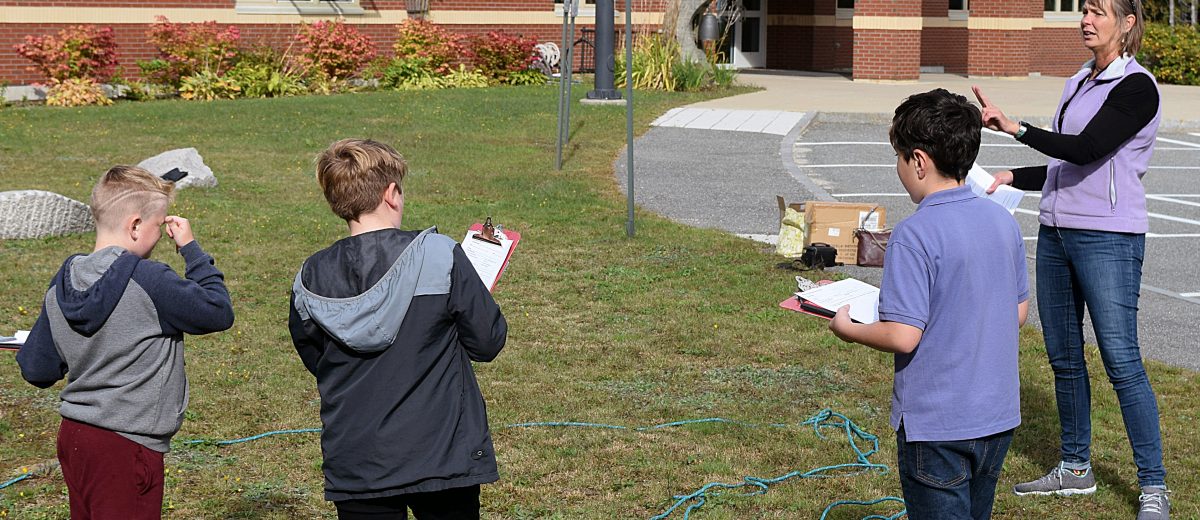by Bill Zoellick, Education Researcher Emeritus and Sarah Hooper, Education Specialist
In the next week or two, middle school science students will be digging through seaweed to find green crabs. More than 40 students in grades 6-8 at Cave Hill School, Ella Lewis School, Mountain View School, and Peninsula School will be out on a broad clam flat in Gouldsboro to survey the green crab population at different tide levels. The students will work under the direction of Mike Pinkham, the Gouldsboro shellfish warden, and Heidi Leighton of the Maine Department of Marine Resources (DMR). Schoodic Institute, working in close collaboration with teachers and RSU 24 district staff, will engage the students in learning about ecosystems, working with data, and presenting what they find to others. We enable students to develop science skills and knowledge while working with knowledgeable adults who really need the students’ help. Our goal is for students to find that they can “do science,” that it is fun, and that it helps their communities.
The crab surveys by the middle school students will fit together with research by Sumner Memorial High School Pathways students, who have been collecting information about clam growth rates and mortality due to predators in the same location. Their past research suggests that crab predation of clams tends to be a bigger problem at lower tide levels–which is also where clams grow best. The middle school students will provide data to help understand whether increased predation is primarily due to the greater amount of time that the clams spend underwater, or whether there are also differences in the way that crabs are distributed on the mudflat.
This is the beginning of a longer-term program that will look at changes in crab populations from year to year. The students, together with shellfishermen and scientists, will use this year’s work along with data from DMR surveys to identify new research questions to study this coming spring, next fall, and beyond.
In addition to providing increased support to clam fishermen over the coming year, Schoodic Institute also seeks to increase students’ science learning and interest in science. Key elements of this year’s program include the integration of project-based research at the high school and middle school. The high school students will be supporting the middle school students, and middle school students will be able to see how their work helps the high school students. All students will learn how their work and knowledge makes a difference in their community. We believe that by connecting communities and schools, we make communities and schools stronger.
